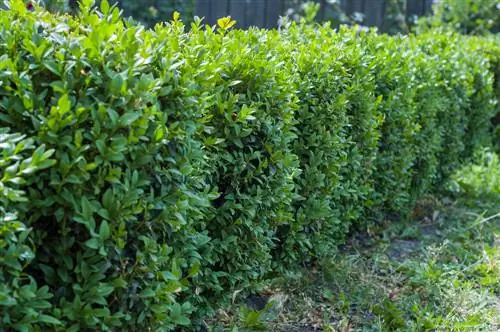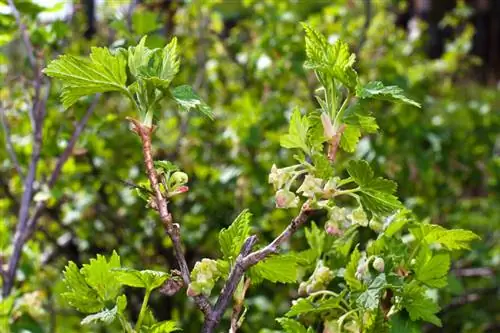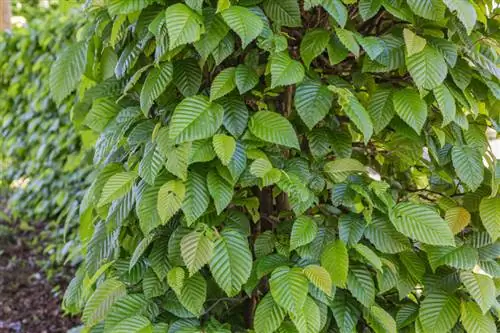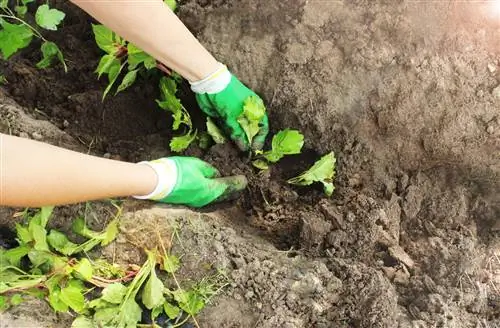- Author admin [email protected].
- Public 2023-12-16 16:46.
- Last modified 2025-06-01 06:02.
Boxwood is the perfect plant for dense hedges and borders: the evergreen tree is considered easy to care for and extremely easy to cut. In addition, cutting can not only keep it in shape, but also limit its height. On the other hand, boxwood is very susceptible to fungal diseases and pest infestation, although the risk of infection can be reduced by maintaining the correct planting distance.

What distance should you keep when planting boxwoods?
The optimal planting distance for boxwood depends on their size and variety. For dense hedges and borders: For small plants (10-15 cm high) 6-8 should be planted per linear meter and for larger plants 4-6 per linear meter, with a distance of 15-30 cm.
Why sufficient distance is so important
In recent years, boxwood, which has otherwise been an integral part of gardens for centuries, has lost considerable popularity. Diseases and pests, especially shoot dieback caused by the fungus Cylindrocladium buxicola and the boxwood moth, which was introduced from East Asia, severely affect the evergreen tree and ensure that the classic boxwood hedge is becoming increasingly rare. An infestation cannot always be prevented, but with appropriate care measures and optimal site conditions it is at least less likely. The correct planting distance is essential so that the individual plants get enough light and air and do not have to compete with each other for both water and nutrients.
Planting spacing depends on size and variety
The correct planting distance depends primarily on the size of the boxwood plants and the variety selected. As a rule of thumb, plants around ten centimeters high can be planted more closely than larger specimens. Even stronger-growing varieties generally need more space than weak-growing, large solitary plants more than hedge plants.
The optimal planting distance for a dense hedge
For a dense boxwood hedge or border, you should choose the following distances:
- small plants around 10 - 15 centimeters high: six to eight plants per linear meter
- larger plants: four to six plants per linear meter
The distance is then between 15 and 30 centimeters, depending on the height of the plants. Solitary trees, on the other hand, need significantly more space, especially if they are elaborately cut topiaries. These not only need enough space for he alth reasons, but also for visual reasons: the attractive figures only come into their own when they are in a suitable location.
Tip
Small plants are cheaper to purchase, but due to their slow growth they need several years to produce an attractive result. To save money, you can also grow the plants you need yourself. However, you need a lot of patience.






